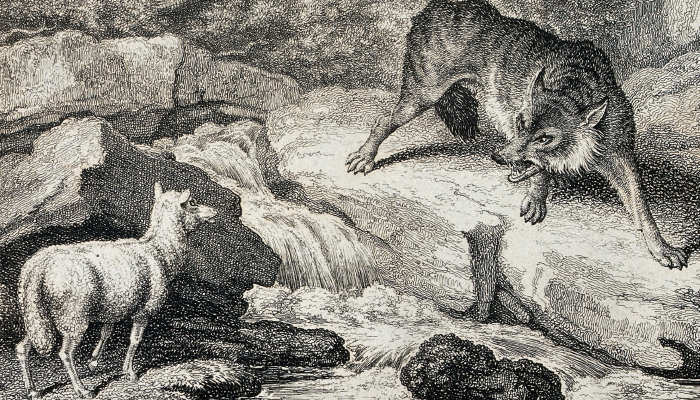
Credit: Wellcome Library, London. Wellcome Images images@wellcome.ac.uk, http://wellcomeimages.org Etching by W-S Howitt.
A recent Nature study has investigated how paranoia and teleological thinking – i.e., beliefs attributing malicious intent or excessive purpose to ordinary events – can manifest themselves in visual perception, revealing their distinct contributions to social hallucinations. Using dynamic visual stimuli, the research explored how individuals perceive agency, particularly the intention of one object "chasing" another.
In order to test how paranoia and teleology might hold their roots in visual perception, participants were asked to complete a series of experiments involving animated displays where discs mimicked predator-prey dynamics. In some trials, a "wolf" pursued a "sheep," while in others, no intentional chasing occurred. Researchers assessed participants’ ability to detect chasing, identify the two roles (wolf or sheep), and how confident they felt in the accuracy of their descriptions.
Using validated psychometric scales to establish participants who were prone to paranoia and/or teleological thinking, the researchers found that participants with high paranoia were more likely to perceive chasing in its absence, mistaking random motion as deliberate pursuit. Similarly, excessive teleological thinkers were shown to over-attribute purpose, and made similar errors to those with high paranoia, but with more distinct biases. Interestingly, high-paranoia individuals also struggled to correctly identify the “sheep,” which reflected their heightened sensitivity to perceived threats. In contrast the teleological thinkers had difficulty pinpointing the “wolf,” an omission which suggested an over-emphasis on these individuals on finding purpose rather than identifying any threats. The two groups both exhibited high confidence in their incorrect perceptions, which underscored the hallucinatory nature of these errors.
The findings offer new insights into how individuals can construct social meanings from ambiguous visual cues, and how high-level cognitive beliefs influence low-level perceptual processes, bridging the gap between vision science and mental health. The authors suggest that social hallucinations – i.e., errors in perceiving agency and intention – arise from the interplay of top-down beliefs and bottom-up sensory processing.
The insights could hold promise for further clinical application, with the authors noting that their present paradigm might provide clinicians with a simple visual test with which they can test which patients might benefit from interventions for paranoid thinking, as well as aiding in diagnosing or tailoring interventions for paranoia or related conditions, such as schizophrenia.
